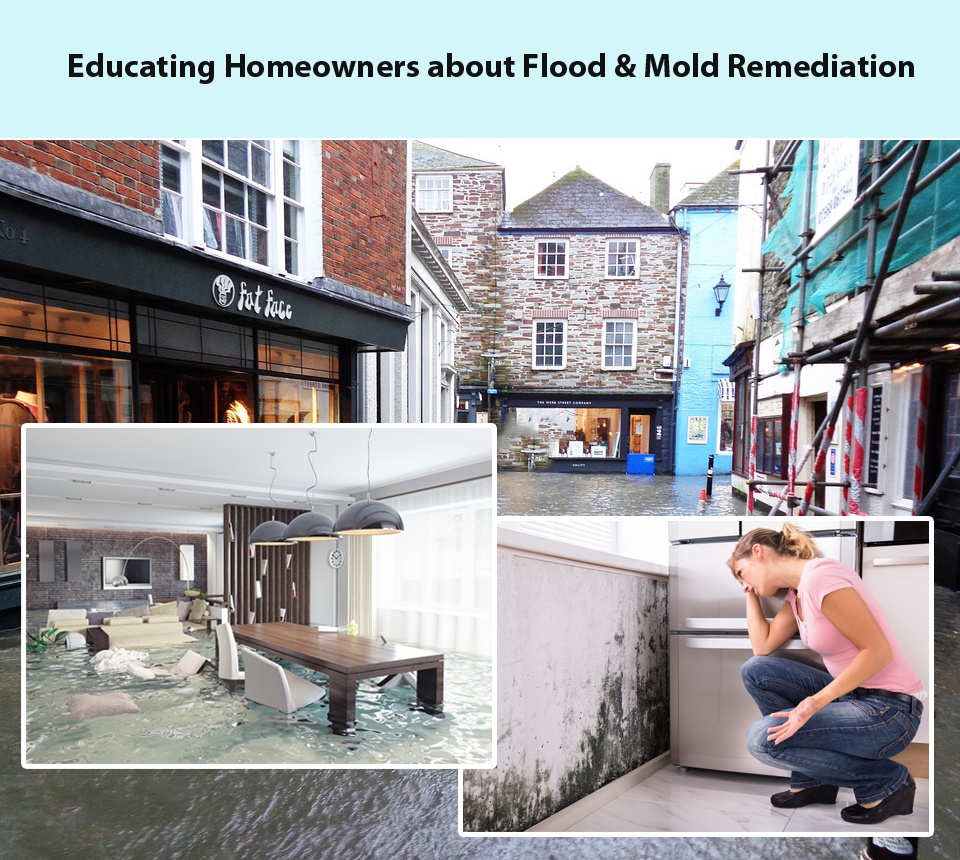
Educating Homeowners about Flood and Mold Remediation
Many homeowners in the Midwest will deal with water and mold damage as a result of recent floods. Flooding exposes your home to outside contaminants and if not dried and cleaned, leads to mold. Mold causes health problems such as congestion and itchy eyes or skin, and individuals with asthma or mold allergies can have a severe reaction when exposed to mold. Inside your home, mold eats away at paint, rots wood, and smells.
Water Damage Restoration
Water damage restoration needs to happen within 48 hours of flooding to prevent mold growth. Because of the strenuous nature of water damage restoration, water damage restoration professionals will usually need to help with the process. Determining the extent of damage will help homeowners decide whether to tackle remediation on their own or hire someone. Once the process starts, pumping water out of the flooded area is the first step. The next step is drying. Industrial dryers and dehumidifiers are used to extract moisture from hard-to-reach areas. Since floodwater is contaminated, cleaning and sanitizing surfaces and furniture is a crucial step for the health of homeowners. Similarly, replacing drywall or flooring may be necessary if the flood damage is severe.
Mold Remediation
If water damage from flooding has caused mold growth, homeowners will need to hire a mold remediation company or begin mold remediation on their own. The first step in mold remediation is to document damage, locate the source of mold growth, and create a mold remediation plan based on the extent of the damage. Once a plan is in place, you or a professional will isolate the area with physical barriers or negative air flow to stop mold from spreading. Removing mold is the next step. Experts will use antifungal or antimicrobial treatments to kill mold colonies and prevent mold from growing. Then, a mold remediation professional or homeowner will clean and sanitize their belongings. Finally, depending on the severity of the damage, restoration might be necessary for minor repairs or replacing drywall and flooring.
Do You Need a Professional?
Homeowners may attempt to fix water damage and mold on their own, but there are several factors to consider when deciding whether to hire a professional:
Time
Mold growth occurs 24-48 hours after exposure to moisture. If you cannot return to a flooded home within that time frame, you will likely have to deal with water and mold damage.
Size
The size of the damage will determine if you need to hire a professional. According to the EPA, mold damage greater than ten square feet requires professional help. If flood damage is minimal, and mold damage is no more than ten square feet, you can attempt to fix water and mold damage on your own.
Color
Water damage restoration professionals categorize flood water by color. Category 1 is clear water from sanitary sources. Dirty, gray water is category 2 and poses some health risks if ingested. Category 3 is highly toxic black water. If black water is present in your home, you will need to hire a water damage restoration specialist to clean black water.
